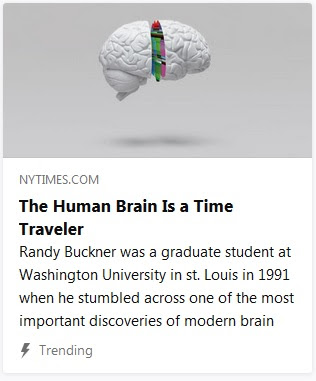Randy Buckner was a graduate student at Washington University in st. Louis in 1991 when he stumbled across one of the most important discoveries of modern brain science. For Buckner — as for many of his peers during the early ’90s — the discovery was so counterintuitive that it took years to recognize its significance.
Buckner’s lab, run by the neuroscientists Marcus Raichle and Steven Petersen, was exploring what the new technology of PET scanning could show about the connection between language and memory in the human brain. The promise of the PET machine lay in how it measured blood flow to different parts of the brain, allowing researchers for the first time to see detailed neural activity, not just anatomy. In Buckner’s study, the subjects were asked to recall words from a memorized list; by tracking where the brain was consuming the most energy during the task, Buckner and his colleagues hoped to understand which parts of the brain were engaged in that kind of memory.
But there was a catch. Different regions of the brain vary widely in how much energy they consume no matter what the brain is doing; if you ask someone to do mental math while scanning her brain in a PET machine, you won’t learn anything from that scan on its own, because the subtle changes that reflect the mental math task will be drowned out by the broader patterns of blood flow throughout the brain. To see the specific regions activated by a specific task, researchers needed a baseline comparison, a control.

No comments:
Post a Comment